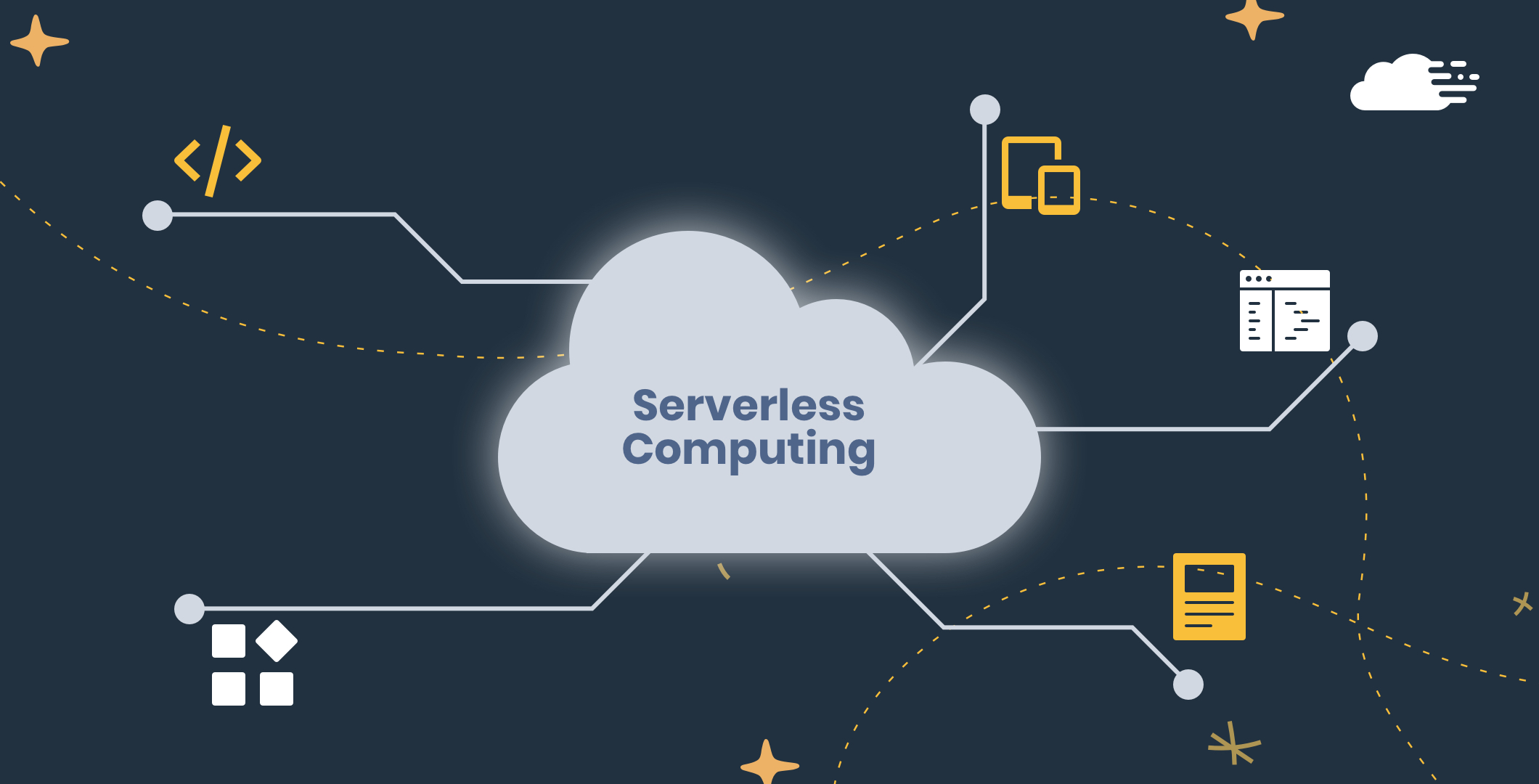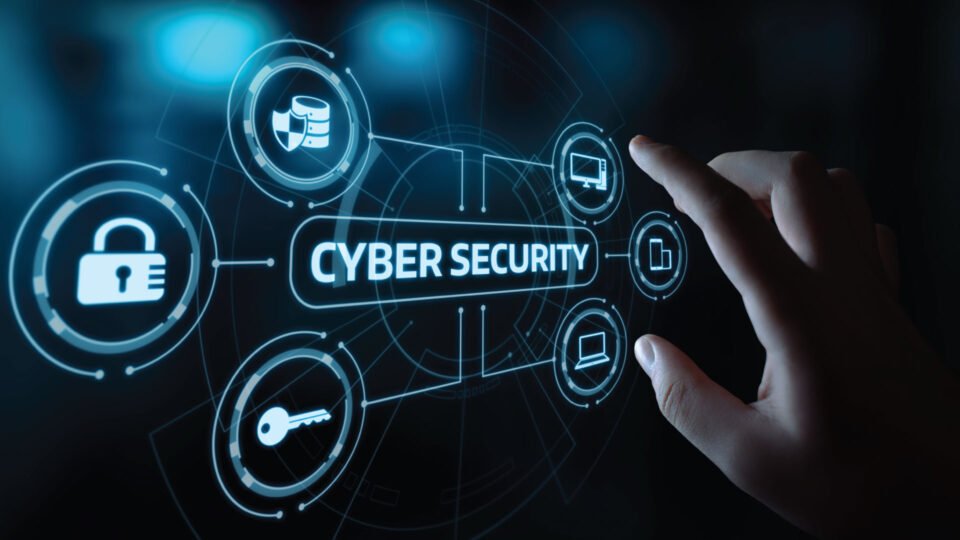Information Technology (IT) is a dynamic and ever-evolving technology field that shapes the way we live, work, and communicate. Every year brings groundbreaking technology innovations that redefine business operations, enhance user experiences, and open new avenues for growth and development in the realm of technology. Staying updated with the latest IT and technology trends is crucial for businesses, IT professionals, and technology enthusiasts who want to remain competitive and relevant in the fast-paced technology landscape.
This article explores the most significant and emerging trends in Information Technology and technology as of 2025, highlighting how these technology advancements are transforming industries and what opportunities and challenges this evolving technology presents.
Key Takeaways
- AI and Machine Learning continue to lead innovation, automating processes and enhancing decision-making.
- Edge Computing addresses latency and bandwidth challenges, crucial for IoT and real-time applications.
- Cloud Computing evolves toward hybrid, multi-cloud, and serverless models, offering flexibility and scalability.
- Cybersecurity advancements like Zero Trust and AI-driven threat detection are essential in a digital-first world.
- Blockchain extends beyond cryptocurrency, revolutionizing transparency and contract automation.
- Quantum Computing promises future breakthroughs but is still in early development stages.
- 5G Networks enable faster, more reliable connectivity, unlocking new technological possibilities.
- AR and VR technologies enhance user engagement and enterprise training capabilities.
- Robotic Process Automation (RPA) automates repetitive tasks, freeing human resources for strategic work.
- Sustainable IT practices are becoming integral to reduce environmental impact and promote green technology.
Artificial Intelligence and Machine Learning
Artificial Intelligence (AI) and Machine Learning (ML) are revolutionizing the Information Technology landscape by enabling machines to perform tasks that traditionally required human intelligence. These technologies are not only reshaping how data is processed but are also transforming entire industries by automating complex operations, improving decision-making, and delivering personalized experiences.
What Are AI and Machine Learning?
- Artificial Intelligence refers to the simulation of human intelligence in machines programmed to think, learn, and solve problems.
- Machine Learning is a subset of AI that enables systems to learn from data patterns and improve their performance without explicit programming.
Together, AI and ML systems can analyze vast amounts of data, identify patterns, make predictions, and even take actions autonomously.
AI-Powered Automation
One of the most transformative applications of AI is automation, which is reshaping workflows across various sectors:
- Workflow Optimization: AI automates repetitive and time-consuming tasks such as data entry, scheduling, and customer inquiries, freeing human workers to focus on strategic and creative tasks.
- Customer Service Chatbots: These AI-driven bots handle customer queries instantly, 24/7, providing personalized responses and resolving common issues without human intervention. This enhances customer satisfaction while reducing operational costs.
- Predictive Maintenance: In manufacturing and heavy industries, AI analyzes sensor data to predict when equipment might fail, allowing preemptive maintenance that minimizes downtime and repair costs.
- Supply Chain Automation: AI streamlines inventory management, demand forecasting, and logistics, making supply chains more responsive and cost-efficient.
By integrating AI automation, businesses achieve higher efficiency, reduce human error, and accelerate decision-making processes.
Advanced Natural Language Processing (NLP)
Natural Language Processing (NLP) is a critical branch of AI focused on enabling computers to understand, interpret, and generate human language. Recent advances in NLP have drastically improved the way machines interact with humans.
- Voice Assistants: AI-powered voice assistants like Siri, Alexa, and Google Assistant use NLP to understand spoken commands and provide meaningful responses, making interactions with technology more intuitive.
- Automated Translations: NLP enables real-time language translation services, breaking down language barriers in global communication and business.
- Sentiment Analysis: Companies use NLP to analyze social media, customer reviews, and feedback to gauge public sentiment and make data-driven marketing decisions.
- Enhanced Search Engines: Search engines employ NLP to better understand user queries, providing more accurate and context-aware search results.
These advancements in NLP are improving accessibility, user experience, and enabling sophisticated human-computer interactions.
AI in Cybersecurit
Cybersecurity is an ever-growing concern as cyber threats become more sophisticated. AI plays a pivotal role in enhancing security measures:
- Threat Detection: AI algorithms continuously monitor network traffic and system activities to detect unusual patterns or anomalies indicative of cyber attacks, such as malware, ransomware, or phishing attempts.
- Real-Time Response: Upon identifying threats, AI systems can automatically initiate responses—like isolating compromised systems or blocking suspicious IP addresses—faster than human teams could react.
- Fraud Detection: Financial institutions use AI to detect fraudulent transactions by analyzing user behavior and transaction patterns, reducing losses.
- Predictive Security: AI helps predict potential vulnerabilities by analyzing historical attack data and system configurations, enabling proactive defense strategies.
By integrating AI, organizations strengthen their cybersecurity posture, reduce incident response times, and protect sensitive data from increasingly complex threats.
Edge Computing

Edge computing represents a paradigm shift in how data is processed and managed. Instead of sending all data generated by devices to centralized cloud data centers, edge computing processes data closer to its source — at the “edge” of the network. This approach is increasingly vital in the modern digital landscape where real-time processing, low latency, and bandwidth efficiency are critical for many applications.
What is Edge Computing?
Edge computing involves placing computing resources — such as servers, storage, and analytics — near or within the data-generating devices themselves. This localized processing helps reduce the distance data must travel, thereby decreasing latency and improving response times.
Traditionally, data from devices like sensors, cameras, or mobile phones would be transmitted over the internet to distant cloud data centers for processing and storage. However, the growing volume of data and the need for immediate insights make this model less efficient. Edge computing solves this by enabling preliminary data processing, filtering, and analysis locally before sending only the necessary data to the cloud.
Benefits of Edge Computing
- Reduced Latency: Critical for applications that require instant decision-making, such as autonomous vehicles, industrial robotics, and real-time video analytics.
- Bandwidth Optimization: By processing data locally, only essential or aggregated data is sent to the cloud, saving on network bandwidth and reducing transmission costs.
- Improved Reliability: In environments with limited or unstable internet connectivity, edge computing ensures continuous operations by allowing local data processing without constant cloud dependency.
- Enhanced Scalability: As the number of connected devices grows exponentially, edge computing distributes the processing load across multiple nodes rather than relying on centralized systems.
IoT and Edge Synergy
The rise of the Internet of Things (IoT) — billions of interconnected devices embedded with sensors and software — has driven the need for edge computing.
- Local Data Processing for Real-Time Actions: IoT devices generate massive volumes of data every second. Edge computing allows these devices to process data immediately on-site, enabling swift responses in applications like traffic management in smart cities, health monitoring devices, and autonomous drones.
- Smart Cities: Edge nodes deployed throughout urban infrastructure can analyze data from traffic lights, surveillance cameras, and environmental sensors in real-time to optimize traffic flow, enhance public safety, and monitor air quality.
- Autonomous Vehicles: Self-driving cars rely on ultra-low latency processing to make split-second decisions. Edge computing systems within the vehicles process sensor data locally, ensuring rapid reaction times critical for passenger safety.
- Industrial Automation: Factories use edge computing to monitor machinery performance and environmental conditions. This enables predictive maintenance, minimizing downtime and preventing costly failures.
By integrating IoT with edge computing, organizations can unlock new levels of operational efficiency and innovation.
Cloud Computing Evolution
Cloud computing has become a fundamental pillar of modern IT infrastructure, providing scalable, flexible, and cost-effective resources over the internet. As business needs grow increasingly complex and diverse, cloud computing continues to evolve, introducing new models and architectures that optimize performance, security, and innovation.
Multi-Cloud and Hybrid Cloud Strategies
Multi-Cloud Strategy
A multi-cloud strategy involves using multiple cloud service providers—such as AWS, Microsoft Azure, Google Cloud Platform, or IBM Cloud—to distribute workloads and avoid dependency on a single vendor. This approach offers several advantages:
- Avoid Vendor Lock-In: Organizations reduce risks associated with relying on a single cloud provider, gaining freedom to switch or balance workloads as needed.
- Best-of-Breed Services: Different providers excel in different areas (e.g., AI, machine learning, data analytics, storage), so multi-cloud enables businesses to pick the best services for each workload.
- Improved Redundancy and Resilience: By diversifying infrastructure across providers, companies enhance disaster recovery and business continuity.
Hybrid Cloud Strategy
Hybrid cloud blends private clouds (on-premises or dedicated environments) with public cloud services, allowing organizations to:
- Keep Sensitive Data Private: Critical data and workloads can remain on-premises or in private clouds for security, compliance, or latency reasons.
- Scale on Demand: Non-sensitive or bursty workloads can leverage public cloud resources, scaling elastically during peak times.
- Optimize Costs: Hybrid models help balance capital expenditure on infrastructure with operational costs of cloud services.
Together, multi-cloud and hybrid cloud models offer unparalleled flexibility, enabling businesses to customize their cloud environments based on workload requirements, compliance constraints, and budget considerations.
Serverless Computing

Serverless computing is an innovative cloud service model that abstracts infrastructure management from developers. In serverless environments, cloud providers automatically handle the provisioning, scaling, and management of servers. Developers focus solely on writing and deploying code.
Benefits of Serverless Computing
- Improved Scalability: Serverless platforms dynamically scale up or down based on the number of incoming requests, ensuring optimal resource use without manual intervention.
- Reduced Operational Costs: Users pay only for the actual compute time consumed (per execution), eliminating costs associated with idle resources.
- Faster Development Cycles: Without worrying about infrastructure, developers can rapidly build, deploy, and update applications.
- Event-Driven Architecture: Serverless is ideal for applications triggered by events such as HTTP requests, database changes, or messaging queues, enabling highly responsive and efficient workflows.
Popular serverless platforms include AWS Lambda, Azure Functions, and Google Cloud Functions. Serverless is particularly suited for microservices, APIs, real-time data processing, and automation tasks.
Cloud-Native Technologies
Cloud-native technologies empower developers and operations teams to build and run scalable applications in modern cloud environments. Key cloud-native components include:
Containers
Containers encapsulate an application and its dependencies in a lightweight, portable unit that can run consistently across different computing environments. This ensures:
- Consistency: Applications run the same way in development, testing, and production.
- Resource Efficiency: Containers use fewer resources than traditional virtual machines, improving density and cost-effectiveness.
Kubernetes
Kubernetes is an open-source platform that automates the deployment, scaling, and management of containerized applications. It provides:
- Orchestration: Automatically manages container lifecycles, load balancing, and fault tolerance.
- Scalability: Supports horizontal scaling to meet changing demands.
- Self-Healing: Restarts failed containers and redistributes workloads without downtime.
Microservices Architecture
Cloud-native applications often follow a microservices design, breaking down complex applications into small, independent services that communicate via APIs. This approach allows:
- Independent Development: Teams can develop, test, and deploy services separately.
- Fault Isolation: Issues in one microservice do not crash the entire application.
- Flexibility: Enables use of different technologies and scaling strategies for each service.
Cybersecurity Enhancements

With the rapid increase in cyber threats—from ransomware and phishing to advanced persistent threats—organizations are adopting more sophisticated and integrated cybersecurity measures. Cybersecurity is no longer an isolated IT function but a fundamental aspect embedded into every layer of the technology stack and organizational processes.
Zero Trust Security
Concept:
The Zero Trust model operates on the principle of “never trust, always verify.” Unlike traditional perimeter-based security, which assumes users and devices inside a network are trustworthy, Zero Trust assumes that no user or device—whether inside or outside the network—is trusted by default.
Key Principles:
- Continuous Verification: Every access request is authenticated, authorized, and encrypted before granting access, regardless of the requestor’s location.
- Least Privilege Access: Users and devices are granted the minimum level of access necessary to perform their tasks.
- Micro-Segmentation: Networks are segmented into smaller zones to limit lateral movement by attackers within the network.
- Device and User Authentication: Strong multi-factor authentication (MFA) is used to verify both users and their devices before granting access.
- Real-Time Monitoring and Analytics: Continuous monitoring of user behavior and device health to detect anomalies and potential breaches.
Benefits:
- Reduces risk of insider threats.
- Limits the blast radius if a breach occurs.
- Adapts well to hybrid and remote work environments where traditional perimeter defenses are insufficient.
AI and Machine Learning for Threat Detection
Role of AI/ML:
- Massive Data Analysis: AI systems can process and analyze huge volumes of network traffic, logs, and endpoint data far faster than human teams.
- Pattern Recognition: Machine learning algorithms can identify patterns of normal behavior and detect anomalies that could indicate threats like malware, phishing attempts, or insider attacks.
- Predictive Capabilities: AI models can predict potential vulnerabilities or attack vectors based on historical data and emerging trends.
- Automated Response: AI-driven security systems can automate responses to threats—such as isolating compromised devices or blocking malicious IP addresses—in real-time, minimizing damage.
Examples:
- User and Entity Behavior Analytics (UEBA): Tracks typical behavior of users/devices and alerts on suspicious activities.
- Threat Intelligence Integration: AI correlates external threat intelligence feeds with internal data to enhance detection accuracy.
- Endpoint Detection and Response (EDR): Uses ML models to identify malicious activity on endpoints and trigger immediate containment.
Benefits:
- Reduces detection time from days or hours to minutes or seconds.
- Enhances security team efficiency by filtering false positives.
- Improves proactive threat hunting and incident response.
Security in DevOps (DevSecOps)
Concept:
DevSecOps integrates security practices directly into the DevOps workflow, ensuring security is embedded throughout the software development lifecycle (SDLC), rather than being an afterthought at the end.
| Key Practice | Description |
|---|---|
| Shift Left Security | Security testing and reviews start early in the development process—during design, coding, and build stages. |
| Automated Security Testing | Tools like SAST, DAST, and SCA are integrated into CI/CD pipelines to automatically scan code for vulnerabilities. |
| Infrastructure as Code (IaC) Security | Security policies and controls are codified and tested as part of infrastructure provisioning. |
| Compliance as Code | Automated checks ensure adherence to regulatory and organizational compliance requirements. |
| Collaboration Between Teams | Security teams work closely with developers and operations teams to share knowledge and rapidly address vulnerabilities. |
| Continuous Monitoring | Applications and environments are continuously monitored for security threats post-deployment. |
Benefits:
Improves overall resilience of applications and infrastructure.
Reduces the cost and complexity of fixing vulnerabilities by catching them earlier.
Accelerates secure software delivery without slowing down development velocity.
Creates a culture of shared responsibility for security across all teams.
Blockchain Beyond Cryptocurrency
Though blockchain technology gained fame as the backbone of cryptocurrencies like Bitcoin and Ethereum, its decentralized, immutable, and transparent nature has inspired innovative applications across various industries. By providing a secure and tamper-resistant ledger, blockchain enables trust and efficiency in scenarios beyond just digital money.
Supply Chain Transparency
How It Works:
- Each step in a product’s journey—from raw material sourcing to manufacturing, shipping, and retail—is recorded on a blockchain ledger.
- Every participant in the supply chain (manufacturers, suppliers, logistics providers, retailers) has permissioned access to update and view the blockchain.
- Data such as timestamps, certifications, quality checks, and transport conditions are immutably logged.
Benefits:
- Authenticity Verification: Customers and businesses can verify the origin and authenticity of products, reducing counterfeits.
- Fraud Reduction: Immutable records prevent falsification of documents and transactions.
- Improved Recall Management: Precise tracking allows quick identification and isolation of faulty or contaminated products.
- Increased Efficiency: Transparency fosters trust and collaboration among supply chain partners, reducing delays and disputes.
Use Cases:
Companies like IBM Food Trust and Walmart use blockchain to trace food products, ensuring safety and quality from farm to table.
Digital Identity Management
How It Works:
- Blockchain provides a decentralized platform where users control their own identity data instead of relying on centralized databases.
- Identity credentials are cryptographically secured and stored on the blockchain, enabling verification without revealing unnecessary personal information.
- Individuals can selectively share verified credentials (e.g., age, qualifications, citizenship) with organizations, reducing identity fraud.
Benefits:
- Privacy and Security: Users maintain control over their personal data, reducing exposure to hacks and misuse.
- Tamper-Proof Records: Immutable storage prevents unauthorized changes to identity information.
- Streamlined Verification: Faster and more reliable identity verification reduces onboarding times in banking, healthcare, government services, etc.
- Inclusion: Provides identity solutions to unbanked or undocumented populations who lack traditional forms of ID.
Quantum Computing

Quantum computing is an emerging technology that leverages quantum mechanics principles to perform complex computations far faster than classical computers.
Potential Impact
Though still in experimental stages, quantum computing technology promises breakthroughs in cryptography, material science, and complex problem-solving technologies.
Industry Investment
Tech giants and governments are investing heavily in quantum technology research, signaling its future importance in the technology landscape.
5G and Beyond
The rollout of 5G (Fifth Generation) wireless technology networks is revolutionizing digital connectivity by offering significantly faster speeds, ultra-low latency, higher bandwidth, and the ability to connect millions of devices simultaneously. As we look ahead, “beyond 5G” technology innovations—like 6G—are already being researched to further expand technology possibilities.
Enabling New Technologies
5G technology is a foundational enabler for a range of cutting-edge technologies that require reliable, high-speed, and low-latency communications. Its impact spans multiple industries and technology sectors:
Augmented Reality (AR) and Virtual Reality (VR) Technologies:
Why It Matters: AR/VR technology applications demand real-time data processing and ultra-low latency to provide immersive technology experiences.
5G Benefits: Technology reduces latency to under 10ms, minimizing motion lag and enabling untethered, real-time AR/VR technology experiences in sectors like gaming, remote collaboration, training, and healthcare technology.
Internet of Things (IoT) Technology:
Why It Matters: Smart cities, homes, and industrial automation depend on billions of interconnected sensors and IoT devices—critical technology components.
5G Benefits: Supports up to 1 million connected technology devices per square kilometer, allowing massive IoT technology deployments for:
- Smart energy grids technology
- Real-time traffic management technology
- Predictive maintenance technology in manufacturing
Autonomous Vehicle Technology:
Why It Matters: Self-driving car technology requires real-time communication with infrastructure (V2X – Vehicle-to-Everything) and other vehicles to make split-second technology-enabled decisions.
5G Benefits: Provides the speed and ultra-reliability needed for safe navigation, collision avoidance, and remote vehicle operation technology.
Remote Healthcare and Robotics Technology:
Enables telesurgery and real-time health monitoring technologies by ensuring stable, low-latency connections for critical technology applications.
Augmented Reality (AR) and Virtual Reality (VR)
AR and VR technologies are gaining traction beyond gaming, finding uses in training, education, healthcare, and remote collaboration.
Enterprise Applications
Businesses use AR/VR for immersive training simulations, virtual meetings, and product design.
Enhanced User Experience
These technologies offer new ways to engage customers and improve accessibility.
Robotic Process Automation (RPA)
Robotic Process Automation (RPA) refers to the use of software “robots” or bots to automate high-volume, rule-based, repetitive tasks that are typically performed by humans. These bots mimic human interactions with digital systems—such as entering data, navigating applications, and triggering responses—without requiring changes to existing IT infrastructure.
Increasing Efficiency
Key Benefits of RPA for Operational Efficiency:
- Time Savings:
- Bots can operate 24/7, completing tasks significantly faster than humans and without fatigue.
- This enables round-the-clock business operations and accelerates throughput.
- Cost Reduction:
- Reduces the need for manual labor in repetitive tasks, resulting in lower operational costs.
- Businesses report ROI within months of implementation due to quick deployment and low error rates.
- Error Elimination:
- Bots follow predefined rules consistently, reducing errors caused by manual data entry or process deviations.
- Employee Empowerment:
- Frees up human workers from mundane or low-value tasks (e.g., invoice processing, data extraction).
- Allows employees to focus on higher-level, strategic tasks such as decision-making, innovation, and customer engagement.
Also Read : Top 10 MBA programs for aspiring entrepreneurs
Conclusion
The landscape of Information Technology is rapidly shifting with each technological breakthrough. Staying abreast of these technology trends — from AI and edge computing to 5G and blockchain — empowers individuals and organizations to harness new technology opportunities and navigate challenges effectively. Embracing these technology innovations will not only improve efficiency and competitiveness but also drive future growth and transformation in our increasingly digital technology world.
FAQs
1. What is the most impactful IT trend today?
AI and Machine Learning are currently the most impactful, driving innovation across industries and transforming business models.
2. How does edge computing differ from cloud computing?
Edge computing processes data near the source, reducing latency, while cloud computing relies on centralized data centers.
3. Is 5G available worldwide?
5G is rolling out globally but coverage varies by country and region; many areas are still in early deployment stages.
4. Can blockchain be used outside of finance?
Yes, blockchain is used in supply chain management, healthcare, digital identity, and more.
5. What industries benefit most from AI?
Healthcare, finance, manufacturing, retail, and transportation are among the top beneficiaries.
6. How secure is cloud computing?
Cloud providers implement robust security measures, but users must also follow best practices for data protection.
7. When will quantum computing become mainstream?
Quantum computing is still emerging; mainstream adoption may take several years as the technology matures.


